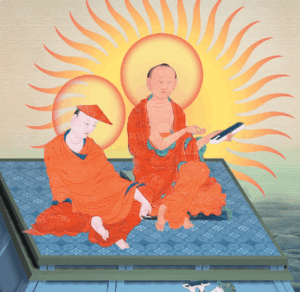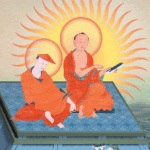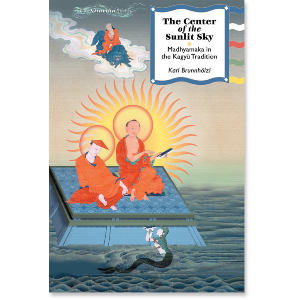Excerpts from the Preface

Given the number of studies on Madhyamaka in general and the quantity of translations of Madhyamaka texts into Western languages, one might well wonder what the point of yet another book on this topic, with yet another translation of the ninth chapter of the Bodhicaryavatara, might be. The brief answer to this is that, despite the extensive materials on Madhyamaka that are currently available in the West, the overall picture of this Buddhist system in India and Tibet is not nearly complete. A number of issues call for an attempt to fill in some gaps. First, with a few exceptions, the majority of books or articles on Madhyamaka by Western—particularly North American—scholars is based on the explanations of the Gelugpa school of Tibetan Buddhism. Deliberately or not, many of these Western presentations give the impression that the Gelugpa system is more or less equivalent to Tibetan Buddhism as such and that this school’s way of presenting Madhyamaka (especially with respect to its Consequentialist branch) is the standard or even the only way to explain this system, which has led to the still widely prevailing assumption that this is actually the case. From the perspective of Indian and Tibetan Buddhism in general, nothing could be more wrong. In fact, the peculiar Gelugpa version of Madhyamaka is a minority position in Indo-Tibetan Buddhism, since its uncommon features are neither found in any Indian text nor accepted by any of the other Tibetan schools. Thus, the current situation in the West in no way represents the richness of Madhyamaka views that existed in India and are still transmitted in all four major Tibetan Buddhist schools. Specifically, there is no general outline of the Madhyamaka view as presented in the Kagyü school of Tibetan Buddhism in any Western language.
However, I would like to make it clear at the outset that this book is not about sectarianism or which view is the better one. Rather, it should be regarded as an attempt to shed some light on more facets of the living Indo-Tibetan Buddhist tradition and to introduce them to a wider Western audience. As the Buddha himself always said, it is up to us which teachings we personally find most convincing and helpful for our lives.
In addition, there is a rather common cliché that the followers of the Kagyü school just chant rituals or sit in caves and three-year retreats to practice meditation and lack any scholarly tradition. By presenting materials from a number of mainly Karma Kagyü sources, I attempt to show that there definitely is a rich scholarly and scriptural tradition in this school and to offer a glimpse of it.
* * *
In order to appreciate Madhyamaka, we first need to understand how this approach can provide us a chance to vividly notice our rigid ways of viewing ourselves and the world. We may then acknowledge how this literally narrow-minded outlook causes our many problems and our suffering. It is crucial to see that Madhyamaka is not just another philosophical trinket that we add on top of all the sophisticated conceptual garbage of which we have already too much anyway. Madhyamaka is not about adding more intellectual headaches, but loosening up and letting go of everything that gives us headaches in the first place. When we first look at the jungle of Madhyamaka refutations of all kinds of belief systems, they might seem quite alien and complicated. However, all these views simply mirror the fixations and complications that we foster in our own minds. Thus, what makes things complicated is not Madhyamaka itself but our inflexible and discursive mind. Actually, Madhyamaka is not at all about doing something complex, new, or particular but about undoing in a very basic and profound sense. When we start to realize this, we might discover some genuine interest and even delight in unraveling the convoluted web of our ingrained patterns. It is these patterns that prevent us from fundamentally relaxing our minds, finding relief from mental afflictions, and being more kind toward ourselves and others, with whom we share the same basic problems. Thus, from a practical point of view, it is not Madhyamaka’s business to refute the strange belief systems of other schools and people, most of whom lived hundreds of years ago in quite different cultures and societies. Rather, we may consider these views as examples that can help us with finding out about our own beliefs and how they cause us trouble. Consequently, as Buddhist practitioners, it is a matter of applying the Madhyamaka approach first and foremost to our own mental entrenchments and trying to come out into the open.
Excerpt from the Acknowledgments
This book would never have come into existence were it not for The Dzogchen Ponlop Rinpoche telling me in his usual, seemingly casual way, “You should write an introduction on Madhyamaka for your translation of Pawo Rinpoche’s commentary on the Bodhicaryavatara.” At first, I took this remark as a joke. However, Rinpoche kept coming back to this idea. He even became very specific about what such an introduction should include and which texts should be consulted, so I could not but start taking this project more seriously. It rapidly grew from a mere introduction into quite an extensive volume of its own, partly because Rinpoche, at each of our meetings over the years, added topics to be included. Thus, my sincere gratitude and respect go to The Dzogchen Ponlop Rinpoche for his original idea and his continuous inspiration and guidance throughout the entire project. Even greater is the kindness and skillfulness of Khenchen Tsultrim Gyamtso Rinpoche, who for many years has guided Western students through the world of Tibetan Buddhist scriptures with their various philosophical systems and terminologies. Without him, I would not have much of a clue about the intricacies of the Buddhist teachings and their practical application. Further thanks go to Acharya Lama Tenpa Gyaltsen, who helped with many questions about translation. I am also very grateful to all the Western scholars, particularly Prof. Lambert Schmithausen and Dr. Klaus-Dieter Matthes, who opened my eyes to the richness and profundity of both the Sanskrit language and the Yogacara tradition.
In particular, I feel very pleased and honored that this book marks the beginning of the Nitartha Institute Series as an expression of the activities of the Nitartha Institute (under the direction of The Dzogchen Ponlop Rinpoche). This series is designed as a timely attempt to present the scriptural traditions of both the Kagyü and Nyingma schools of Tibetan Buddhism to a wider Western audience.
May this book serve as a contributing cause for the enlightened activity of H. H. the Seventeenth Gyalwang Karmapa Urgyen Trinlay Dorje that swiftly and unimpededly embraces all sentient beings without exception. May it in particular assist in sustaining the pure scholarly tradition of the Karma Kagyü lineage as it was initiated and upheld by all the Karmapas as a means to liberate beings from ignorance and suffering.
From The Center of the Sunlit Sky by Karl Brunnhölzl


